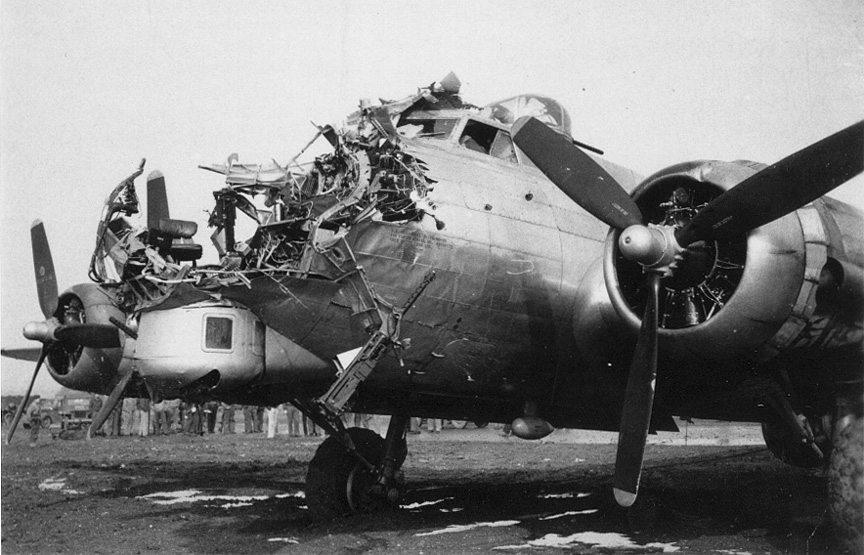 |
| Glenn Miller Band With The Modernaires |
Less than two weeks after the Miller Band’s visit, the 398th suffered its first fatal take off crash early Sunday morning, October 15, 1944. Three aircraft had already taken off for a second consecutive mission to heavily-defended Cologne, when something went wrong on the fourth ship. Shortly after lifting off, Command PFF plane 42-97746, crashed in the village of Anstey, just a few miles south of the main runway. Fortunately the large bomber missed all houses and crashed into the moat surrounding the old Anstey castle mound behind St. George’s church. All ten crewmen were killed including pilot William Meyran and Command pilot Charles Khourie. Fully loaded with high-octane fuel and with a full bomb load, the wreckage burned furiously and villagers were evacuated. Luckily the twelve unexploded bombs were submerged in the moat and did not explode. They were later removed by the bomb dispersal team from the base once the moat was drained, and villagers were allowed to return home after two days.
 |
| Anstey Church and Moat |
Another event from that same October 15th mission to Cologne, along with one famous photo, has become an iconic symbol of the durability of the B-17 and the courage and resilience of men who flew her. Flying through intense flak over Cologne, a 601st squadron plane, 43-38172 “Lovely Julie”, piloted by Lawrence DeLancy and Phil Stahlman, took a direct burst from an 88 mm shell in the nose section, blowing it apart, instantly killing togglier George Abbott and momentarily knocking navigator Raymond LeDoux unconscious. Although stunned and bleeding, LeDoux made his way to the cockpit to assist the two pilots who were struggling to control the seemingly un-flyable plane. The blast had blown away most of the nose, covering the windshield with debris and making it difficult to see.
Men waiting on the ground at Nuthampstead could hear the wounded plane long before they could see it. Instead of the characteristic deep roar of four Wright-Cyclone engines they heard a howl “like a banshee screaming.” When it came into view they understood. “Look at that nose!” someone shouted. No need for red flares or an up-wind landing this time. They watched as the once-beautiful B-17 glided in for a hot landing, taking up the entire runway with failing brakes until it came to a stop in the mud at the end of the concrete. As ambulances, medical staff and fire trucks arrived, many of the crew stumbled from the waist door, strangely silent; men in shock. Flight surgeon Dr. Robert Sweet had to pry pilot DeLancy’s hands from the wheel and help him from the plane. As Colonel Hunter approached, Dr. Sweet told him, “Colonel, that young man doesn’t want to talk to you now. When he is ready you can talk to him, but for now leave him alone.”

The crew was given “flak leave” to shake off the stress, but were expected back in two weeks, just in time for one of the dreaded missions to Meresberg. For their parts in that October 15th drama, DeLancy was awarded the Silver Star for his “miraculous feat of flying skill,” Stahlman was awarded an Oak Leaf Cluster for his Distinguished Flying Cross, and LeDoux received the Distinguished Flying Cross for “extraordinary navigation skill.”

No comments:
Post a Comment